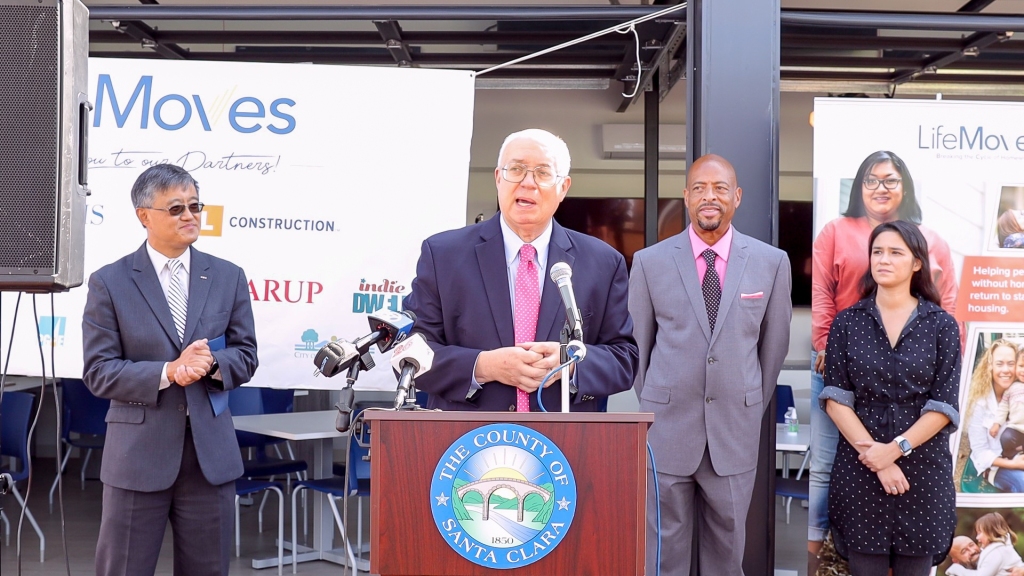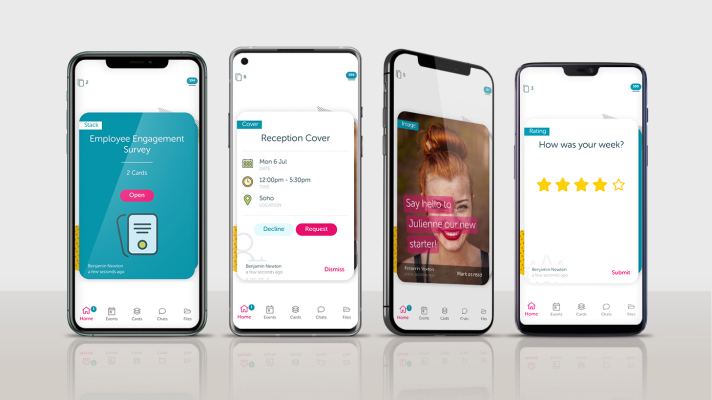Two Santa Clara County supervisors are pushing a $25 million plan to help build 10 new temporary housing sites for homeless residents — and they’re calling on cities, companies and nonprofits to help fund the effort.
The push would fund the construction of the type of pre-fab, modular units that are rapidly gaining traction in the Bay Area as an innovative way to address the homelessness crisis on the region’s streets that is less expensive than traditional homeless shelters.
When nonprofit LifeMoves opened one such shelter in Mountain View in May, CEO Aubrey Merriman set a goal of raising $250 million to open 10 more. He challenged corporate leaders and other agencies to help.
Now, Santa Clara County is poised to become the first to heed that call.
“We are not only accepting the challenge, we are re-issuing the challenge,” said Supervisor Joe Simitian, who hopes the county’s funding will be the catalyst that inspires other leaders to contribute. “When you’re looking at a task that significant, somebody’s got to be the first to say we’re in. And I’m hoping that that’s our county.”
Simitian and Supervisor Otto Lee want the county to contribute $2.5 million per project for up to 10 projects. The money likely would come from the American Rescue Plan — President Joe Biden’s $1.9 trillion COVID-19 stimulus package. The county board of supervisors is set to vote on the proposal Tuesday. If the supervisors decide to move forward, staff will draft the official documents for a final vote in November.
If the measure passes in the fall, Simitian expects the county could start doling out money within days of the final vote.
“I think there will probably be at least a couple projects that are ready to go later this fall,” he said.
Several cities already have expressed interest, including Palo Alto, which is set to discuss a proposed project near the Baylands during a Monday City Council meeting. Sunnyvale and Milpitas also are interested, Simitian said.
Future projects will be modeled on LifeMoves’ 124-bed Mountain View shelter. Unlike traditional shelters where people sleep together in dorm-like rooms, in the new sites, each family or individual gets a private room with a locking door in a modular unit. That reduces the risk of residents spreading COVID and experts say giving people their own rooms provides a better sense of privacy, dignity and safety.
The units are intended as a temporary respite — a place for occupants to live for up to about four months while they wait to be placed in permanent housing.
The idea is picking up steam in the Bay Area. San Jose Mayor Sam Liccardo on Wednesday announced his intention to start work on 683 new interim housing units — mostly using the modular model — by the end of next year. The city already has opened three modular sites, and has tentative plans for two more.
In San Leandro, a community of 34 tiny homes opened as interim homeless housing earlier this month.
The communities aren’t intended as a permanent fix — they’re a way to get someone off the street quickly. Experts agree that what will solve the crisis is more permanent housing that’s affordable and accessible to extremely low-income people. But while permanent housing can cost as much as $800,000 per unit to build in Silicon Valley and take several years, LifeMoves estimates that modular, pre-fab units cost between $50,000 and $200,000 per unit and can be built in less than six months. A traditional, dorm-style homeless shelter also would take years to build, and would cost between $400,000 and $800,000 per unit, according to the LifeMoves estimate quoted in Simitian and Lee’s proposal.
The new sites would also offer case managers to help occupants find permanent housing, as well as mental health care, addiction services, classes on parenting, financial literacy and other life skills, job placement resources and other services.
At the Mountain View site, the 12 family units have private bathrooms, while the remaining 88 single-person units share bathrooms. There are no kitchens — residents are provided three ready-made meals per day. Merriman envisions the next projects having private bathrooms for everyone. While Mountain View is one-story, he hopes to stack modular units into multi-story buildings for future proejcts.
By building 10 new modular shelters, LifeMoves estimates it could help nearly 20,000 people get out of homelessness over the next five years. There were more than 9,700 unhoused people in Santa Clara County as of the last count in 2019.
“$250 million, scaling this tenfold over is not the answer that will solve homelessness,” Merriman said, “but it certainly is a significant start in that direction.”











